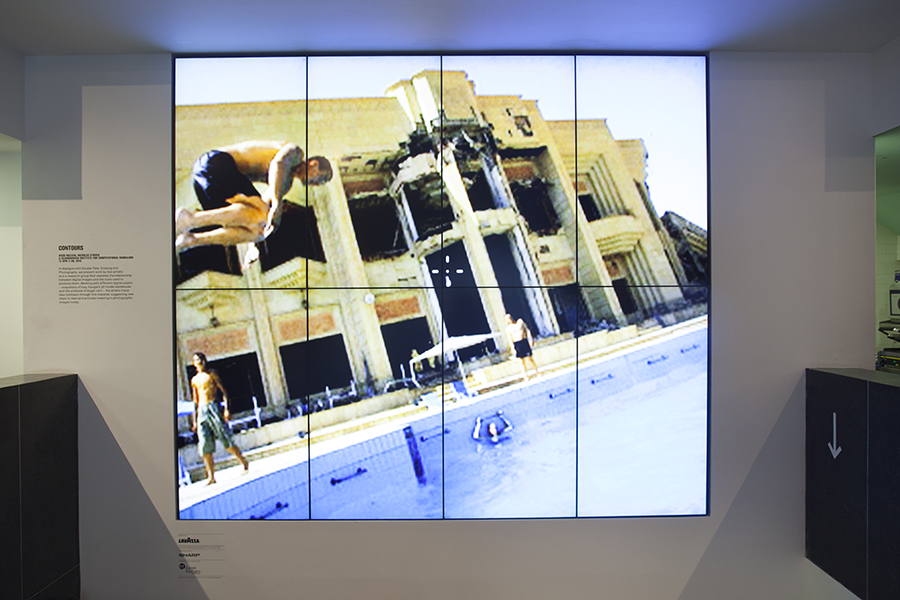Utilising different digital tools, the artists Jesse McLean, Nicholas O’Brien and the Scandinavian Institute of Computational Vandalism (SICV) playfully explore themes of image manipulation, creative authorship and user agency at a time when image production is increasingly automated and mediated by machines.
Jesse McLean and Nicholas O’Brien offer us a glimpse into their computer screens as they view, prod and manipulate a series of specially selected 2D and 3D images. McLean’s Invisible Tracks (2009) uses Adobe Photoshop’s Clone tool and Magic Wand – commonly used to automate arduous image editing tasks - to fracture, decompose and rebuild details of photographs sourced from the Iraq war. Through this process the McLean meditates on the politics of image manipulation, making visible the numerous small and painterly gestures which combine to mask, layer, smudge, blur, erase documentary and editorial photographs.

O’Brien works with SketchUp: Google’s 3D modelling software which is celebrated for simplifying and democratising 3D drawing. After importing models of archetypal American homes sourced from online repositories, O’Brien rotates, skews, twists and mutates these photorealistic structures into unrecognisable architectural shards. By taking us inside SketchUp’s interface we are able to witness the creative tension between the artist’s exploratory mouse gestures and the spatial restrictions imposed by the software.
In Algorithmic Arabesque (2014) by the SICV we observe a series of photographs whose contours have been delineated and traced – not by a human – but by a machine. The project emerged from a residency the SICV took at Museum Jorn, Denmark which holds the archives of the The Scandinavian Institute of Comparative Vandalism, founded by the artist Asger Jorn in 1961. Jorn’s group were concerned with how images migrate across space and time, and eventually amassed a huge archive of images, maps, negatives, prints, manuscripts and indexes. Confronted with this material, the SICV scanned and fed the images through a set of computer vision algorithms navigate the archive automatically, tracing and tracking key information in the image. Through this process the SICV is interested in considering how complex image structures work, and how digitisation might open up new interpretations of the archive.
